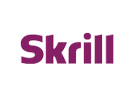What is Infrared Spectroscopy?
Infrared spectroscopy is an analytical technique used to study how infrared radiation interacts with matter. This technique involves measuring the absorption of infrared light by a sample, which provides information about the molecular composition and structure of the substance being analyzed.
What is Infrared Spectroscopy Used For?
Infrared spectroscopy is a versatile tool used to identify and study chemical substances in various states—solid, liquid, or gas. It is commonly employed in fields such as chemistry, biology, environmental science, and materials science to analyze molecular bonds, identify compounds, and monitor chemical reactions.
What Does Infrared Spectroscopy Tell You?
Infrared spectroscopy provides valuable information about molecular groups within a sample. By detecting the absorption of infrared radiation at specific wavelengths, it helps identify functional groups and molecular structures. This technique is useful for qualitative and quantitative analysis of complex mixtures.
How Much Does an Infrared Spectroscopy System Cost?
The cost of an infrared spectroscopy system can vary based on factors such as brand, features, and performance. For a detailed quote on Optosky FT-IR spectrometers, please contact us directly.
How Does Infrared Spectroscopy Work?
Infrared spectroscopy works by measuring the absorption of infrared light by a sample. When infrared radiation passes through a sample, specific wavelengths are absorbed by molecular bonds, creating an absorption spectrum. This spectrum reveals information about the molecular composition and structure of the sample.
How to Choose an Infrared Spectroscopy System?- Brand Reputation: Look for a well-established brand with a good reputation for reliability and performance.
- Performance: Assess the performance specifications of the infrared spectrometer, including resolution, sensitivity, and accuracy.
- Service and Support: Consider the level of customer support and service provided by the manufacturer or distributor.
Where to Buy Infrared Spectroscopy Systems?
You can purchase Optosky FT-IR spectrometers directly from the Optosky website or through our local distributors. Our systems are available with comprehensive support and service options.
Why Choose Optosky Infrared Spectroscopy?
Optosky is a trusted name in infrared spectroscopy, known for delivering high-performance solutions at a competitive cost. Our FT-IR and ATR spectrometers offer advanced features and reliable results, making them ideal for various analytical applications. Optosky's commitment to quality ensures that you receive a cost-effective solution without compromising on performance.
Optosky FT-IR Spectrometer: Advanced Performance with Cost-Effective Solutions
Optosky’s FT-IR spectrometer sets a new standard in infrared spectroscopy with its superior performance and user-friendly features, offering an impressive alternative to high-end systems like those from Bruker. Here’s how Optosky stands out:
- Spectral Range: 7800–350 cm⁻¹, covering a broad range of infrared wavelengths for comprehensive analysis.
- Resolution: <1 cm⁻¹, ensuring high precision in spectral data.
- Signal-to-Noise Ratio (SNR): 40,000:1, delivering clear and accurate measurements.
- Measurement Time: Only 1 minute per sample with a peak-to-peak resolution of 4 cm⁻¹.
- Wavenumber Accuracy: <0.01 cm⁻¹ and Wavenumber Precision: <0.1 cm⁻¹, guaranteeing reliable and repeatable results.
- Modular Design: Optional plug-and-play measurement modules for easy replacement and upgrades.
- Battery Life: Built-in lithium battery with >8 hours of operational life for extended use.
- Power Requirements: AC220V / 50Hz for versatile setup options.
- Analysis Time: Approximately 5 seconds, offering rapid data acquisition.
- System: Runs on Windows 10 for seamless integration with your existing IT infrastructure.
- Software: Comprehensive suite including infrared control, spectrum processing, multi-component quantitative analysis, auto-inspection software, advanced macro programming, and continuous online monitoring of optical components (e.g., laser light source, sensor, beam splitter) to ensure optimal performance. The software also features automatic removal of air, water, and CO₂ for enhanced accuracy.
- GMP Compliance: Fully compliant with GMP and 21CFR 11 regulations, ensuring adherence to industry standards.
Optosky’s FT-IR spectrometer combines high performance with cost efficiency, making it a practical choice for both research and industrial applications. With its advanced features and competitive pricing, it offers an exceptional value compared to traditional high-end systems like Bruker FT-IR spectrometers.
How to Select a Suitable FT-IR Spectrometer?
FT-IR Spectrometer Selection Questionnaire
To help us recommend the most suitable FT-IR spectrometer for your needs, please provide the following information:
Desired Spectral Range:
- Mid-IR
- NIR
- Both
Primary Focus of Analysis:
- Physical analysis
- Chemical analysis
- Both
Intended Usage:
- Laboratory setting
- Field applications
Application Type:
- Scientific-grade research
- Industrial-grade applications
Type of Analysis:
- Online process analysis
- Static (batch) analysis
Type of Analysis Required:
- Qualitative analysis
- Quantitative analysis
- Both
Sample Types:
- Solids
- Liquids
- Gases
- All of the above
Please fill out the questionnaire and send it to us to receive a tailored recommendation for the FT-IR spectrometer that best suits your needs.
What's FT-IR Spectrometer Applications?






